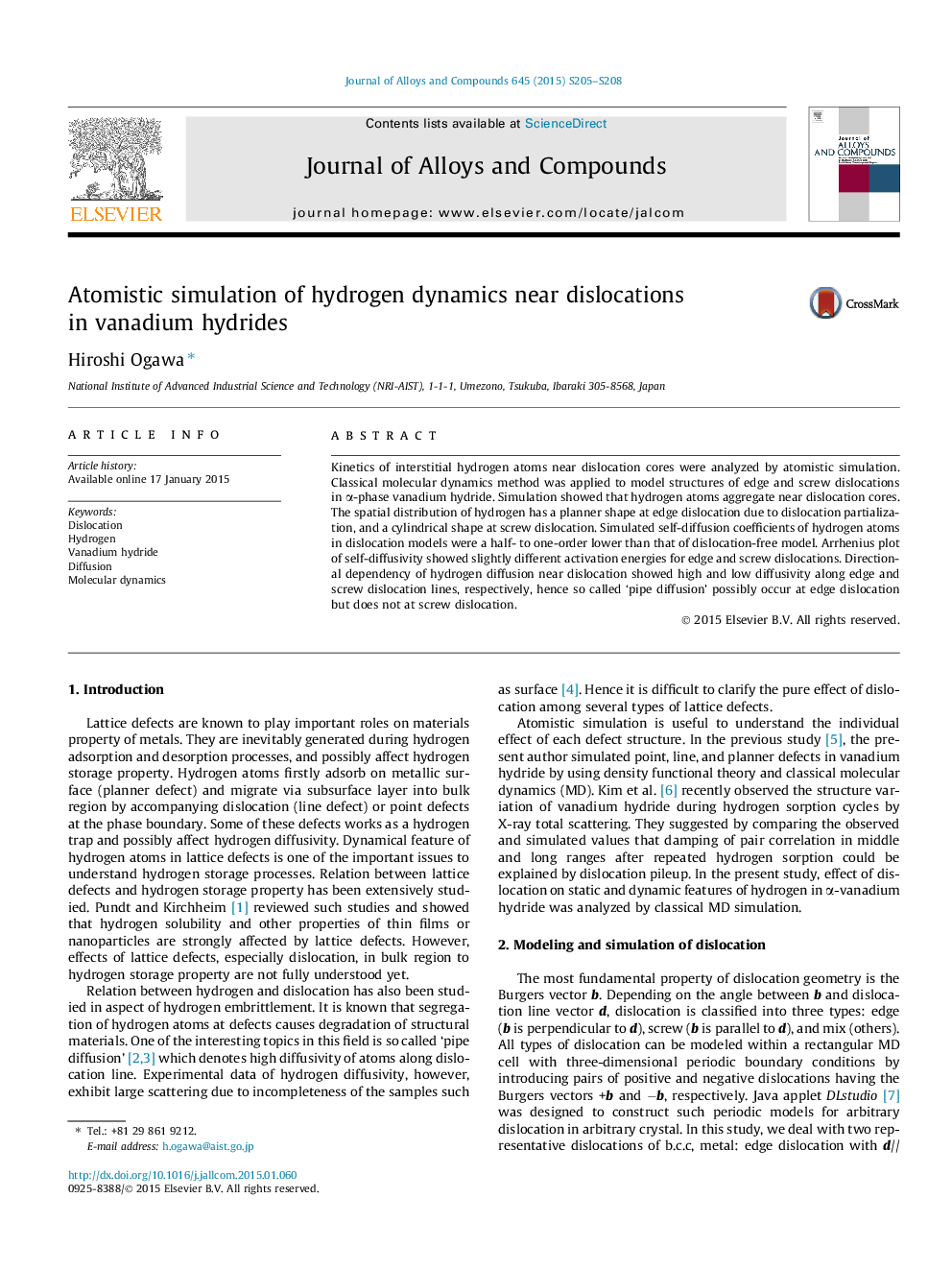| Article ID | Journal | Published Year | Pages | File Type |
|---|---|---|---|---|
| 1608748 | Journal of Alloys and Compounds | 2015 | 4 Pages |
•Hydrogen–dislocation interaction was simulated by molecular dynamics method.•Different distribution of H atoms were observed at edge and screw dislocation.•Planner distribution of hydrogen may be caused by partialized edge dislocation.•Hydrogen diffusivity was reduced in both edge and screw dislocation models.•Pipe diffusion was observed for edge dislocation but not for screw dislocation.
Kinetics of interstitial hydrogen atoms near dislocation cores were analyzed by atomistic simulation. Classical molecular dynamics method was applied to model structures of edge and screw dislocations in α-phase vanadium hydride. Simulation showed that hydrogen atoms aggregate near dislocation cores. The spatial distribution of hydrogen has a planner shape at edge dislocation due to dislocation partialization, and a cylindrical shape at screw dislocation. Simulated self-diffusion coefficients of hydrogen atoms in dislocation models were a half- to one-order lower than that of dislocation-free model. Arrhenius plot of self-diffusivity showed slightly different activation energies for edge and screw dislocations. Directional dependency of hydrogen diffusion near dislocation showed high and low diffusivity along edge and screw dislocation lines, respectively, hence so called ‘pipe diffusion’ possibly occur at edge dislocation but does not at screw dislocation.
